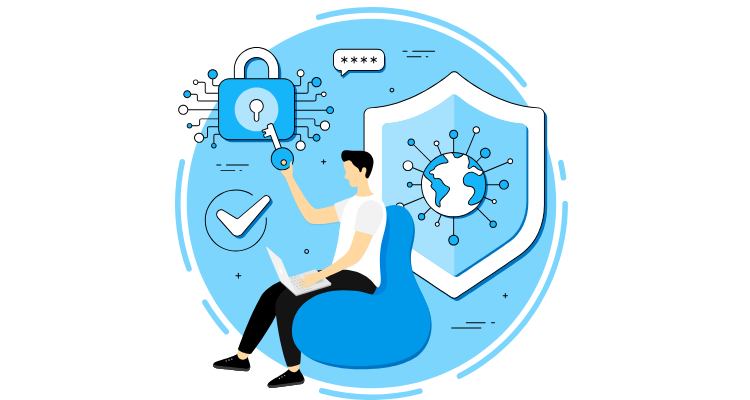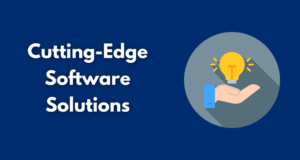Technology’s moving at an absolutely insane pace these days, and businesses are feeling serious pressure to modernize their IT infrastructure just to keep up. It’s like trying to change the tires on a moving car – you know you need to do it, but figuring out how without crashing is the tricky part.
Modernization definitely brings some amazing opportunities – we’re talking about improved efficiency that can transform how your team works, better security that actually protects your data, and innovation capabilities that can give you a real competitive edge. But here’s the reality check: it also presents some significant hurdles that can completely stall your progress or send costs through the roof.
The latest IT modernization report highlights the top challenges facing mid-sized businesses in 2025, from finding qualified tech talent to managing exploding cloud costs. But it’s not all doom and gloom – there are proven strategies for overcoming these obstacles.
Here’s a breakdown of the most common modernization roadblocks you’re likely to hit in 2025, along with practical solutions that actually work in the real world.
Table of Contents
ToggleCybersecurity Threats

Modern, connected systems create way more attack surfaces than the old isolated networks we used to have. Every new endpoint, cloud service, and integration point is potentially another way for bad actors to get into your systems.
We’re seeing data breaches and ransomware attacks happening more frequently, and they’re getting more sophisticated too. The attackers are basically keeping pace with our modernization efforts, which is pretty scary when you think about it.
Solutions that make a difference:
- Multi-layered security that doesn’t rely on just one defense
- Zero trust architecture where nothing gets trusted by default
- Continuous monitoring that catches threats early
- Regular security training for employees
The key is building security into your modernization plans from day one instead of treating it like an afterthought you’ll deal with later. Also employees should be encouraged to use security applications like remote access VPN, that help maintain secure connections in their office network, while working outside the office, which can pose significant threats.
IT Skills Shortages

Finding qualified people for cloud, AI, and cybersecurity roles is honestly a nightmare right now. Everyone’s competing for the same pool of talent, and salaries are getting crazy expensive for specialized skills.
This shortage isn’t just about hiring – it’s impacting project timelines, quality of implementations, and your team’s ability to maintain new systems once they’re deployed.
Solutions include investing in upskilling programs for your existing team (which is often cheaper than hiring), forming partnerships with educational institutions or consulting firms, and considering managed services for specialized functions you can’t staff internally.
Don’t overlook the value of cross-training either – having multiple people who understand critical systems reduces your risk when someone leaves.
Cloud Cost Management
Cloud costs are spiraling out of control for a lot of companies because it’s so easy to over-provision resources when you’re not paying attention. The “infinite scalability” of cloud sounds great until you get the bill.
Poor visibility into what you’re actually using and paying for leads to waste, and some companies are even considering moving workloads back on-premise because cloud costs got so high.
Solutions involve implementing cost tracking tools that show you exactly where money’s going, rightsizing resources based on actual usage patterns, and getting better at vendor negotiations to secure volume discounts or reserved capacity pricing.
Regular cost reviews should be part of your routine – cloud spending can creep up gradually until it becomes a serious budget problem.
Legacy System Integration
Getting old systems to play nice with new technologies is like trying to get your grandparents’ rotary phone to work with your smartphone – the technology gap creates real compatibility challenges.
There’s always risk of downtime during migration, and business-critical systems can’t afford extended outages. Plus, you often discover unexpected dependencies that weren’t documented anywhere.
Solutions include taking a phased approach to modernization instead of trying to do everything at once, using API-based integration to connect old and new systems without major changes, and doing thorough testing in non-production environments.
Document everything during the process – you’ll thank yourself later when someone asks how something works or why certain decisions were made.
Business Continuity Gaps
A lot of companies have disaster recovery plans that look good on paper but haven’t been tested in years. When push comes to shove, they discover their backup systems don’t work or their recovery procedures are outdated.
There’s often low confidence in data protection capabilities, especially as systems become more complex and distributed across multiple cloud providers.
Solutions require regular disaster recovery drills that actually test your procedures under realistic conditions, implementing redundant systems for critical functions, and using cloud backups with automatic replication to multiple locations.
Don’t assume your cloud provider’s backup services are sufficient – you need your own backup strategy that you control and test regularly.
Change Management Resistance
Cultural pushback against new technologies is probably the hardest challenge to solve because it involves changing how people think and work. Employees get comfortable with existing systems and resist anything that disrupts their routine.
Lack of proper user training leads to low adoption rates, which means you don’t get the benefits you paid for. Sometimes people will find workarounds to avoid using new systems entirely.
Solutions start with getting leadership buy-in and visible support for modernization initiatives. Clear communication about why changes are necessary and how they benefit everyone helps reduce resistance.
Ongoing user support and training are crucial – don’t just dump new software on people and expect them to figure it out themselves.
Conclusion
Cybersecurity threats, skills shortages, cloud cost overruns, integration nightmares, continuity risks, and change resistance – these are the big challenges dominating IT modernization discussions in 2025, and they’re not going away anytime soon.
But here’s the thing – with proactive strategies and a willingness to adapt as you learn, businesses can absolutely turn these obstacles into competitive advantages. The companies that figure this out will pull ahead of those that don’t.
Remember that modernization isn’t a one-time project you complete and forget about – it’s an ongoing journey that requires continuous planning, agility, and alignment between your technology choices and business goals.









